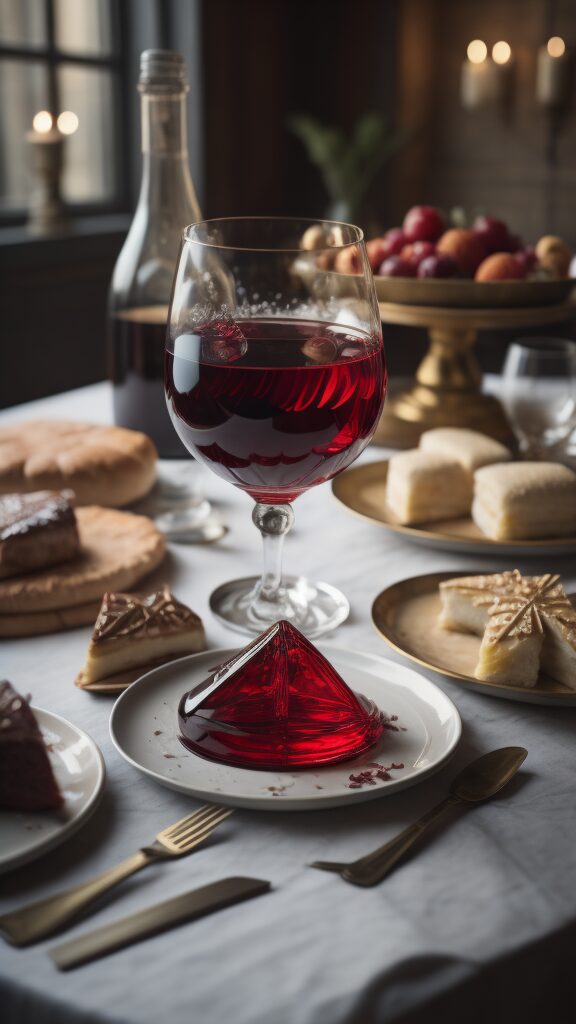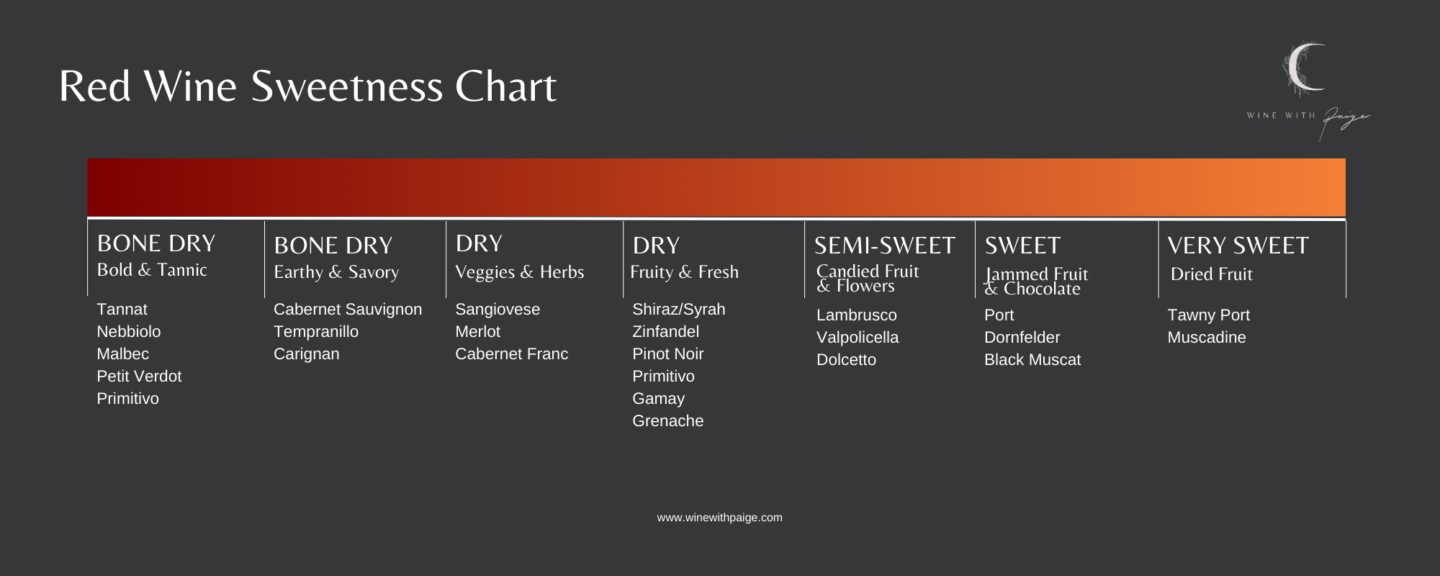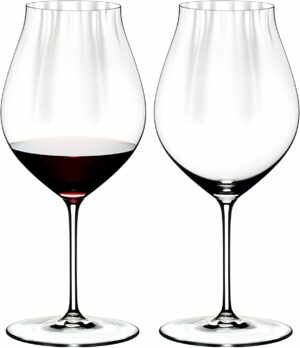
Is Pinot Noir Sweet or Dry? Unveiling the Secrets Behind this Elegant Red Wine
If you’ve ever found yourself pondering the question “Is Pinot Noir sweet?”, you’re not alone. This captivating red wine, with its delicate flavors and enticing aromas, often leaves wine lovers curious about its sugar content.
Today, we embark on a journey through the vineyards to uncover the mystery of Pinot Noir’s flavors and sweetness level.
Related: Best Pinot Noir for Every Budget

Is Pinot Noir Sweet or Dry?
Pinot Noir is typically a dry red wine. While it can exhibit fruity flavors from the grapes, the fermentation process usually leaves it with minimal residual sugar, resulting in a wine that is more on the dry side.
However, because Pinot Noir tends to be a light bodied, fruit-forward wine, many wine drinkers perceive it as “sweeter” than darker, bolder wines, despite comparable residual sugar levels.
The perceived sweetness can vary slightly depending on factors such as the winemaking process and the specific characteristics of the grapes.

Factors that Affect Sweetness in Pinot Noir
Pinot Noir, often referred to as the “heartbreak grape” due to its finicky nature, can produce wines that range from bone dry to subtly sweet. Several factors contribute to the perceived sweetness of a Pinot Noir:
1. Residual Sugar
Unlike a dessert wine, Pinot Noir is generally dry, meaning it contains minimal residual sugar after the fermentation process. However, the amount of sugar left in the wine can vary, influencing the overall sweetness.
2. Fruit Flavor
Pinot Noir grapes boast a delightful array of fruit flavors, from cherry and strawberry to raspberry and plum. These natural sugars contribute to the wine’s taste, but it’s crucial to distinguish between fruitiness and sweetness.
3. Alcohol Content
The alcohol content of a wine can impact how we perceive its sweetness. Pinot Noir, with its medium body and moderate alcohol content, strikes a balance that keeps it from being overly sweet or too dry.
What is Pinot Noir?
Pinot Noir, a red wine grape originating from the Burgundy region of France, has secured its place as one of the most revered and challenging varieties worldwide.
Known for its thin skin and difficulty to grow, cultivating Pinot Noir requires a delicate touch.
This grape has found a second home in the cool climate of California’s Sonoma Valley, where its nuances can truly shine. Pinot Noir wines are celebrated for their elegance, complexity, and the ability to convey a sense of place, making them a favorite among wine enthusiasts.
Related: The Complete Guide to Pinot Noir

Typical Pinot Noir Tasting Notes & Flavors
When you indulge in a glass of Pinot Noir, be prepared for a sensory journey:
Aromas: Delicate floral notes, earthiness, and a hint of spice.
Flavors: Red berries like cherry and strawberry, sometimes accompanied by savory undertones like mushroom or a touch of vanilla.
Texture: Silky and smooth, with a medium body that dances gracefully on the palate.
Understanding these characteristics enhances your appreciation of the wine and allows you to savor each sip.

How to Enjoy Pinot Noir
To fully experience the magic of Pinot Noir, pay attention to the details:
Pinot Noir Glasses
For the optimal enjoyment of Pinot Noir, choose a wine glass with a specific shape that enhances its delicate aromas and flavors. The ideal Pinot Noir glass is one with a wide bowl and a tapered top. Here’s why:
Wide Bowl: The wide bowl exposes a greater surface area of the wine to the air. This helps with the aeration of the wine, allowing its aromas to open up and evolve.
Tapered Top: The tapered or narrower top of the glass concentrates the wine’s aromas, directing them toward your nose as you sip. This design enhances the sensory experience, allowing you to fully appreciate the subtle nuances of the Pinot Noir.
The combination of a wide bowl and tapered top captures and intensifies the wine’s bouquet, making the tasting experience more enjoyable.
My favorite Pinot Noir glass is the Riedel Performance Pinot Noir Glass – because it tapers to precisely enhance the flavors of my favorite wine variety. Shop it here.
Pinot Noir Serving Temperature
To fully appreciate the flavors and characteristics of Pinot Noir, it’s best served at a slightly cooler temperature than room temperature. Aim for a serving temperature of around 55-60°F (12-15°C).
This temperature range allows the wine to express its vibrant fruit flavors while maintaining a silky texture on the palate. Serving Pinot Noir too warm can result in the alcohol becoming more pronounced, diminishing the wine’s overall balance.
So, chill it slightly (approximately 20 minutes in the fridge prior to serving – not longer!) and let the nuanced aromas and tastes of Pinot Noir unfold beautifully with each sip.
Related: How to chill wine fast
Food Pairing
Depending on the perceived sweetness level of Pinot Noir, you can explore a range of food pairings that complement its nuanced flavors. Here are some versatile options:
Dry Pinot Noir (Low Residual Sugar)
- Roast chicken or turkey
- Grilled salmon
- Earthy mushroom dishes like risotto
- Aged cheeses, such as Gruyère or Camembert
Fruity Pinot Noir:
- Duck
- Pork tenderloin
- Cranberry-based sauces or chutneys
- Brie or goat cheese
Medium-Sweet Pinot Noir:
- Barbecue dishes
- Sweet and savory glazed ham
- Spicy cuisine, like Mexican or Thai
- Semi-soft cheeses like Havarti
Sweet Pinot Noir (Higher Residual Sugar):
- Dark chocolate desserts
- Berry tarts or pies
- Foie gras
- Creamy blue cheeses
Remember, personal taste preferences play a role, so feel free to experiment and find combinations that delight your palate.
The versatility of Pinot Noir makes it an excellent companion for a variety of dishes, from light and delicate to richer and more robust. Enjoy the exploration of flavors!

Conclusion
In the realm of red wines, Pinot Noir stands out as a graceful and versatile option. While its sweetness may vary, the careful craftsmanship of winemakers ensures a balanced and delightful experience.
So, whether you’re a seasoned wine enthusiast or just beginning to explore the world of reds, Pinot Noir invites you to savor its nuanced flavors and embrace the joy of wine discovery.
Cheers to the captivating journey that each bottle unfolds!

Excellent article